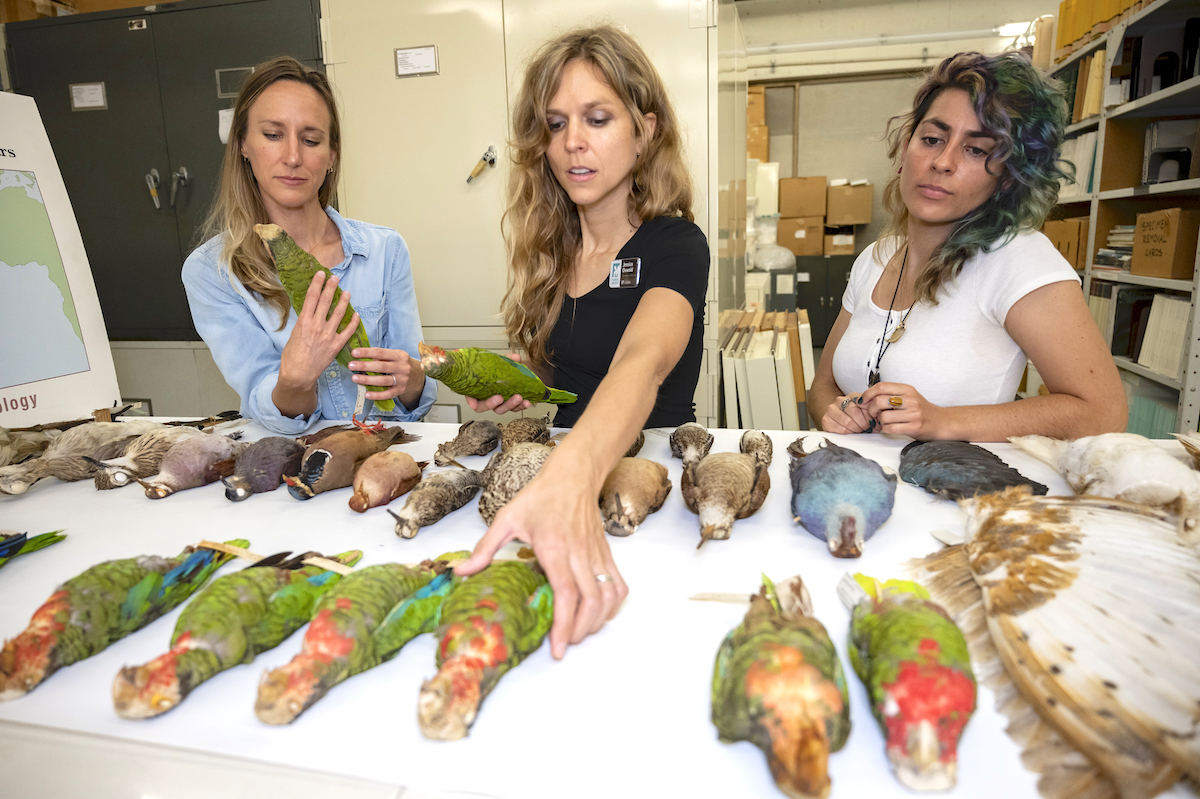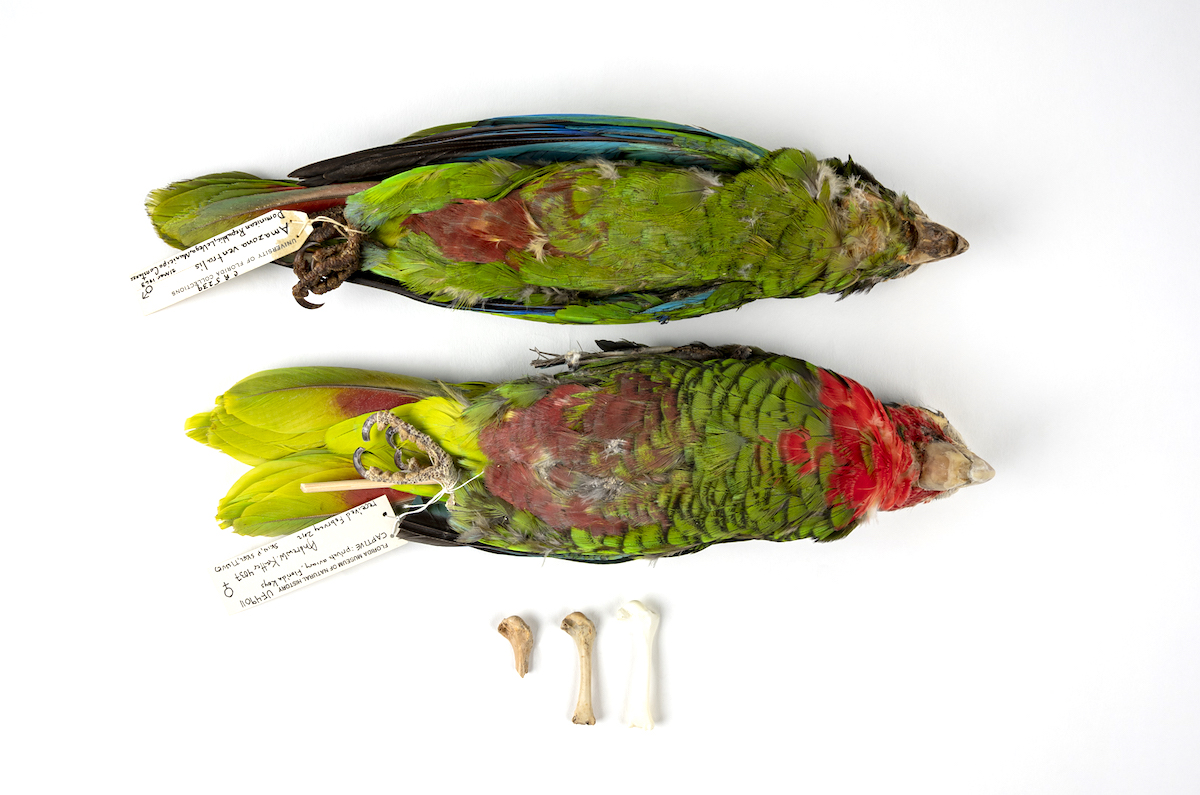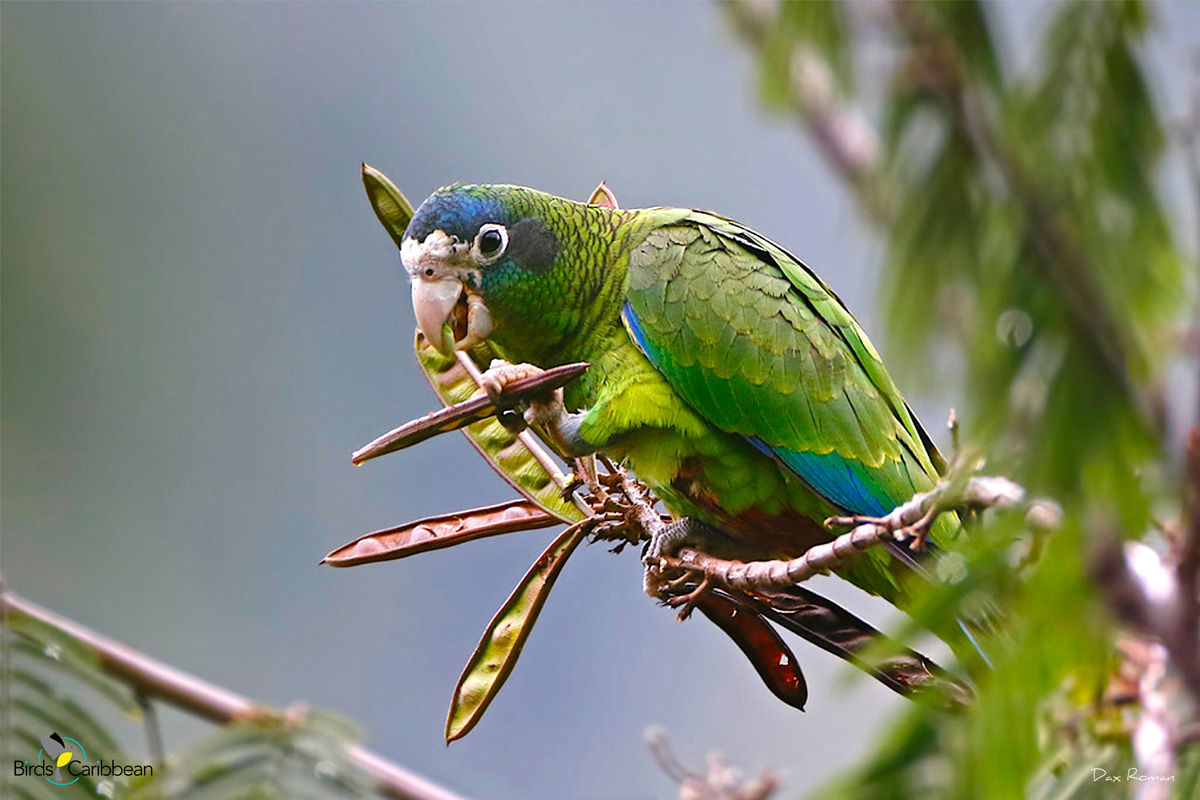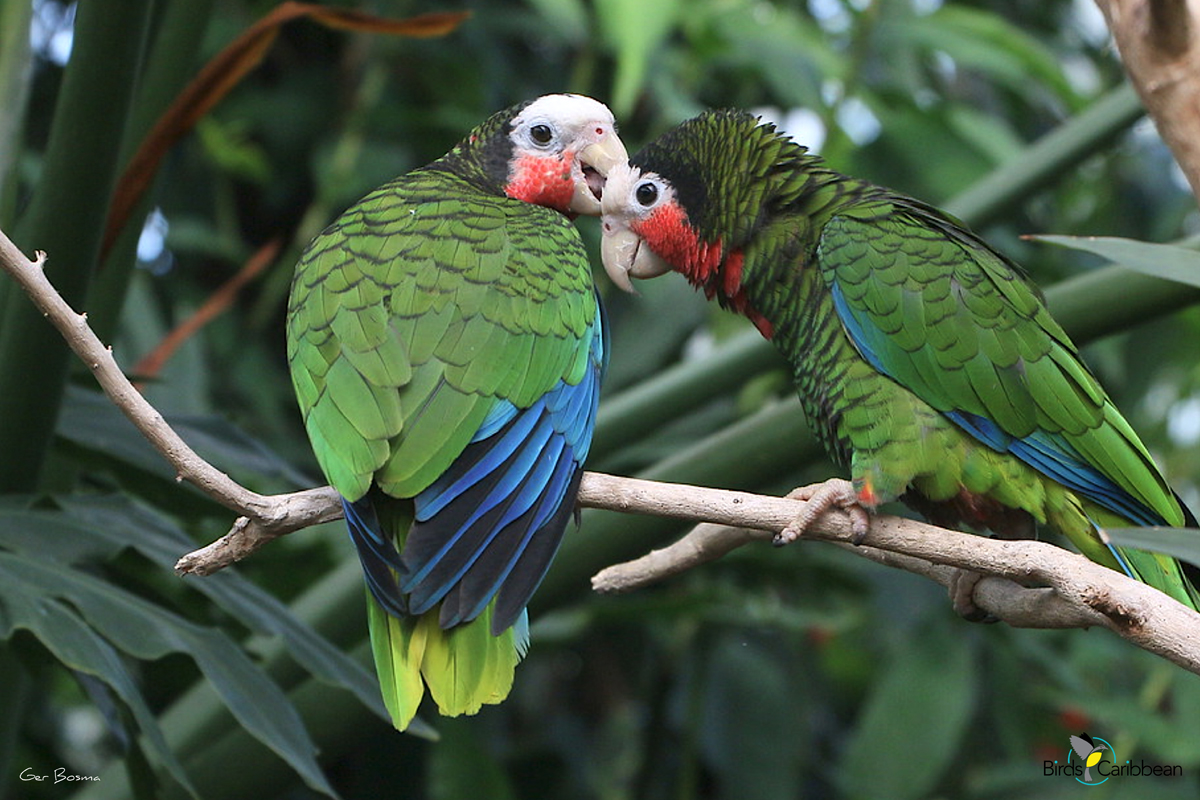For as long as we have been here, human activity has fundamentally altered our environment. In this blog, forensic scientist and ornithologist, Dr Jessica Oswald, and archaeologist and curator, Dr Michelle LeFebvre, discuss their latest research into changes in parrot diversity after human arrival to the Caribbean. Their study analyzed ancient DNA from fossils and archaeological specimens to show how even cultures and peoples that are largely lost, have shaped the diversity and distributions of species, and changed ecosystems.
Dr LeFebvre elaborates, “As we enter what many are calling the “Age of Humans” (or the Anthropocene), it is more and more apparent that conservation must consider how species can survive in a human-dominated world. In the Caribbean, parrot conservation is exemplary of this need! This study provides a long-term blueprint, or baseline, of past human impacts on parrots from which to think about the future of extant parrot species distribution, vulnerability to loss, and hopefully persistence across Caribbean landscapes increasingly impacted by people.” Dr Oswald adds, “Only through deep time perspectives of diversity with paleontological (pre-human), archaeological (human associated) and modern samples from museum specimens, can we begin to reveal the complexity of our role in shaping our natural world.”

Understanding the long-term impact of humans on biodiversity is critical for sound conservation. Parrots are one of the most enigmatic and beloved animals worldwide. For thousands of years, they have been valued as pets, for their feathers, and as a source of food. They are also among some of the most endangered birds today as they face extinction due to habitat loss and the pet trade. Parrot conservation efforts include reintroduction to places previously occupied by parrots and breeding programs. However, knowing the natural (pre- human) distributions of parrots is nearly impossible with modern day distributions because of thousands of years of trade and habitat loss. The conservation of parrot species thus greatly benefits from knowledge about past parrot diversity and distributions prior to encountering people for the first time. We can obtain this information through fossils and bones from paleontological (pre-human) and archaeological (human associated) sites.
Humans have been altering the natural world for longer than we thought
The Caribbean is a well-known biodiversity hotspot. Yet, the region has lost more than half of its native parrot diversity since the arrival of humans around 6,000 years ago, including macaws, parakeets, and even a tiny sparrow-sized parrot called a parrotlet that once inhabited the islands. Today, there are only 12 remaining parrots native to the Caribbean, which compete for space and resources with 12 non-native parrot species that have been recently introduced to the islands. Fossil and archaeological records and historical documents, all suggest that the remaining species were once far more abundant than they are today. For example, while exploring The Bahamas over 500 years ago, Columbus wrote that flocks of parrots were so abundant that they “obscure[d] the sun.”
All species of Amazona parrots are in decline and their pre-human, native distributions are not well understood. Through our work recently published in the Proceedings of the National Academy of Sciences, we aimed to understand how diversity and distribution of Amazona parrots changed before and after humans arrived in the Caribbean. Our primary focus was on the Cuban Parrot (A. leucocephala) and the Hispaniolan Parrot (A. ventralis), which have excellent archaeological and paleontological records. These records allowed us to reconstruct historical distributions and diversity over ~10,000 years—a period called the Holocene—through the ancient DNA found in these remains. Through this effort we also investigated the genetic relationships of living or recently lost (in the 20th century) Cuban Parrot populations and the relationships of all Amazona species using modern specimens curated in natural history museum collections. We combined this molecular data with carbon dating and evolutionary analysis to produce a comprehensive baseline of Caribbean parrot diversity through time.

The endemic Hispaniolan Parrot was once native . . . to The Bahamas!
In our study, we found that Caribbean parrots were much more diverse earlier in the Holocene and prior to human arrival to the region. Parrot extinctions started upon the arrival of Indigenous peoples ~6,000 years ago, accelerated through colonization by European settlers at the end of the 15th century, and they continue today. Within Amazona parrots, we found evidence that a population of Cuban Parrots in the Turks and Caicos was genetically distinct and is now extinct. The Hispaniolan Parrot, now endemic to Hispaniola, was once also native to The Bahamas prior to human settlement. Our results also suggest that the Hispaniolan Parrot was transported to islands beyond their native ranges, including Montserrat in the Lesser Antilles. From the perspective of Caribbean parrot conservation, our results suggest that many species have been lost due to human impacts and there is evidence of long-term human introductions of species beyond their native ranges.

The findings from our study provide the most detailed view of Caribbean parrot diversity and distribution across the Holocene and show that the shifts in parrot diversity and distributions were strongly influenced by people across millennia. The results clarify that notions about whether a species is native or restricted to a region or island requires data across long time scales, rather than relying purely on the lens of the present. Deep-time historical sciences and perspectives are key to conservation as we navigate biodiversity loss and conservation in the present and future.

Jessica A. Oswald is a Michigan native who earned her PhD from the University of Florida. She has spent her career building a research program that uses a variety of data, like fossils and genomic data, to understand the diversity and distributions of birds. Her hope is that these data can be used for conservation applications and will provide insight into the importance of paleontological data in biogeographic, phylogenetic, and ecological studies.
Michelle J. LeFebvre is an archaeologist and a curator of archaeology at the Florida Museum of Natural History, University of Florida. With a focus on how interactions between people and animals in the past have impacted animal diversity and distribution in the present, she collaborates with paleontologists, biologists, Indigenous peoples, and local resource managers to support the conservation of biological and cultural diversity in the Anthropocene. Her passion lies in exploring the ways in which human culture and nature are linked and shape the world around us.
